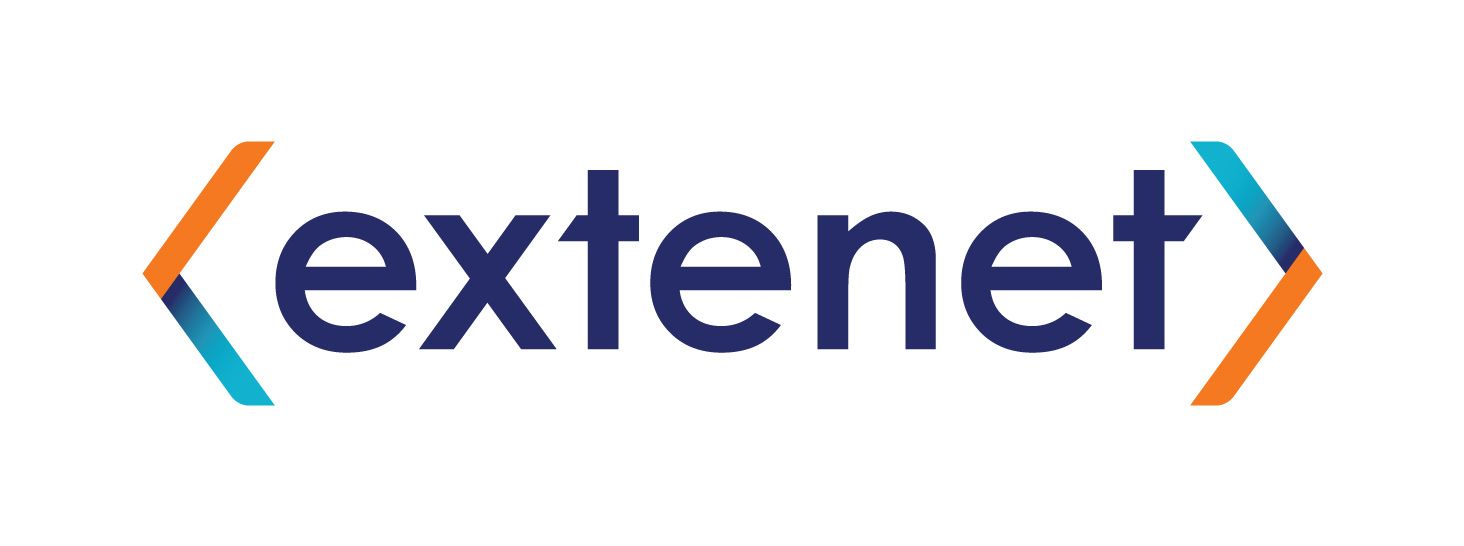About small cells
What is a small cell?
A small cell is a low-cost radio access point with low radio frequency (RF) power output, footprint and range. It can be deployed indoors or outdoors, and in licensed, shared or unlicensed spectrum.
Small cells deliver high-quality, secure cellular coverage indoors and out, complementing the macro network to improve coverage, add targeted capacity, and support new services and user experiences. There are various types of small cell, with varying ranges, power levels and form factors, according to use case. The smallest units are for indoor residential use; the largest are urban or rural outdoor picocells.
In the 5G Era, small cells will be deployed in a far wider range of scenarios than in the past, and the form factors and architectures will be extremely varied. A recent SCF work item provides concise definitions of 5G small cells and the small cell network architecture and product types.

Small cell use cases
Small cell use cases are changing – and not just because of 5G. The evolving requirements of consumers and operators have been joined by those of the neutral hosts and the enterprises that will drive private network rollout.

Commercial property
Business parks, waterfront developments, office blocks, apartments and shopping malls all need connectivity. As end users – including both visitors and staff members – insist on secure and reliable cellular connectivity for voice and data, new models are emerging to ensure that such connectivity can be delivered. And small cells can deliver. But the way they deliver is changing. One model no longer fits all. Yes, small cells can enhance the external signal of an operator to enhance indoor connectivity. But, increasingly, mobile traffic is concentrated indoors, and that means office buildings, malls or railway stations, to name only a few, need to support all operators. This is becoming even more important as businesses go mobile-first and adopt bring-your-own-device policies.
Learn moreIndoor mobile device users all want to download and upload files, make video calls and more. But modern building techniques block signals – and therefore block outside-in coverage. Even where a macro can reach indoors, relying on the macro degrades the outdoor network.
The answer? Multi-operator base stations or virtualized platforms are among the most exciting developments of recent years. They have enormous potential for cost-effective indoor coverage. Virtualized platforms that can support multi-tenancy will in turn make neutral hosting an appealing way to deliver cost-effective coverage of commercial property.
SCF is driving the continuing development of cost-effective, small cell-supported solutions to these requirements. It is working with the participants – spectrum owners, enterprises, site owners and a growing number of neutral hosts. It is also working to drive open interfaces – fully open, multi-vendor, 5G small cell designs down to chip level – to ensure the economies of scale modern rollouts require.
As well as small cell designs, ongoing work programs from SCF are looking at multi-operator neutral host solutions, private cellular networks, Edge services, and network management developments. The aim is not only to enable cost-effective small cell deployment in enterprises, offices, local government buildings and shopping centres but to add useful new functionality to those small cells.

Multi-operator indoor coverage for your enterprise with neutral-hosted small cells
Enterprises demand excellent connectivity – including mobile signals for all operators.
Download
Venues
The role of small cells in venue connectivity is growing. It is also changing. Stadiums and venues offer very specific connectivity challenges. They regularly experience huge demand peaks for relatively short periods of time. They also require separate consideration of the differing requirements of visitors, staff and emergency services. Visitors want reliable connectivity to make voice calls, and to download and upload content throughout an event or visit. Stewards, repair staff, road crew and emergency services want to use wireless connectivity to ensure the smooth, safe running of both the venue and the event.
Learn moreMany wireless technologies are making this happen. Small cells are among the most important. The work of SCF includes enabling small cell support for venue-based connectivity. This includes assessing and enabling planning tools, interoperability and new spectrum opportunities. It also includes developing open interfaces and bringing small cells together with the exciting growth of private networks and neutral hosting.
Both private networks and neutral hosting are capable of delivering secure, robust and reliable venue communications – and already have done so in some major venues. For example, in November 2018, American Tower partnered with Ruckus to deliver a CBRS private LTE network deployment at International Speedway Corporation’s newly renovated ISM Raceway in Phoenix. The solution delivers expanded connectivity to motorsports enthusiasts in the grandstands, camping grounds and Midway.
Venue and event-led connectivity often deploy small cells based on their reliability, convenience and ease of installation. New business models like neutral hosting will make small cells an even more attractive option, guaranteeing that multi-operator or private communications can be part of the offering. SCF is committed to enabling this future – and working closely with the groups and technologies that will make it happen.

Private networks
SCF has launched a new program of work focussed on evolving network management and automation for 5G Era networks. However, most industry attention in this area concentrates on the management requirements of MNOs and public networks. SCF is committed to driving opportunities for small cells and private cellular networks. This means developing a better understanding of enterprise requirements for the management of networks that address the needs of specific vertical sectors.

Private networks
Private networks will transform cellular communications. They are today a key part of SCF work. They – and we – are helping to enable the development of new approaches to deployment. Private cellular networks will enable new business models, tailored service offerings and access to new or difficult-to-reach enterprise sectors. The need customers of such networks have for IoT capability, broadband and secure, uninterrupted communications will all play a part. But private cellular networks need to be purpose-built to support the unique requirements of the customer organization. The ownership model is different too. A private network may be self-managed by the customer or service provider – but the service provider may be a mobile network operator, a neutral host, or an industry-specific technology provider.
Learn moreEarly versions of such networks already serve local government, smart cities, transportation, ports, oil, gas and mines, factories, stadiums, malls, campus sites, healthcare and rural services.
And this is only the start. Private cellular networks can provide higher-quality and much more secure mobile connectivity than Wi-Fi. They have a more extensive ecosystem of technology suppliers, system integrators and service providers than proprietary solutions. Commercial conditions are ideal for enterprises and government to leverage private networks for their business-critical and mission-critical connectivity needs. Small cells, 5G and new participants – most notably neutral hosts – will drive this trend.
And SCF is helping to enable this scenario. Small cells are ideal for this new paradigm. They come in an increasingly diverse range of form factors that can deal with diverse deployment environments. And multi-operator capabilities, as well as interoperability, open interfaces and plug and play are further enhancing the effectiveness of small cells in private networks.
SCF work programs and membership reflect the importance of private networks in general and neutral-host-led business models in particular. Our work now involves helping enterprise, industry and government understand the potential benefits of private networks. It also involves developing technical capabilities that will enable small cells to accelerate the development of private networks.
And multi-operator capabilities, as well as interoperability and plug and play, often driven by SCF initiatives, are further enhancing the effectiveness of small cells in private networks, giving small cells a major role in one of the newest and most important developments in the recent history of cellular communications.
Private networks release program
In April 2020, we published a comprehensive market position paper about private networks. It lays the foundations for a larger program of work in the enterprise-critical area of private networks, where small cells play a central role.
The objective is to help enterprise, industry and government understand the potential benefits of private networks to support their digital connectivity needs, while helping private network service providers better understand the benefits which are most valued by the different types of customer.

Private cellular networks with small cells
This is a foundational report which sets out the key opportunities, challenges and recommendations in the Private-Small Cell Network market.
Download
Dense urban
Outdoor demand for mobile coverage in dense urban environments is not uniform. It spikes in specific areas, at certain times of day or year or during certain events. Operators need to be ready to serve this growing and non-uniform demand – and small cells are the most cost-effective solution.
Learn moreSmartphones, tablets and laptops, and the networks that support them, are making mobile broadband a way of life. Most users will soon expect to be able to access data and voice everywhere.
This need is a major driver for urban small cells — and not just on the street. Shopping centres, stadiums, airports, theme parks and railway stations — any source of high demand or less-than-perfect coverage may also require small cells.
Small cells improve capacity, coverage and end user experience. They also allow operators to generate additional revenue from increased use and new services. Better coverage can even bring benefits to a society and to the economy. And densification — led by small cells — will be the largest contributor to these improvements in the longer term.
Deployment complexity, backhaul, business case, management and interoperability have for some years been seen as barriers by operators. SCF is managing the transition to a highly densified environment in many ways, notably by working with members from across the ecosystem to provide common logical interfaces for the main components of 5G small cells. It is also supporting the drive for a regulatory environment that minimizes unnecessary planning restrictions and avoids lengthy and complex planning application procedures for small cells.
Despite such concerns, most operators regard outdoor small cells as an essential part of their toolkit in delivering mobile broadband. Planned or ongoing examples already exist. Many more are on the way.

Precision planning for 5G Era networks with small cells
This paper, co-authored by SCF and 5G Americas, provides operators with a detailed blueprint for precision planning of small cells, which will enable them to avoid the pitfalls of densification.
Download
Virtualization
Network virtualization is one of the hottest topics in telecommunications. When applied to the access network the possibilities are extraordinary. Newer small cell designs will bring these possibilities to life. They include clusters of ‘virtualized cells’ run from a central controller, along with low-power remote radio heads. This approach to network design is changing the economics and operation of cellular networks.
Learn moreVirtualized RAN in the small cell environment is deployable today. It can revolutionize the economics of rolling out large numbers of cells in many dense urban or indoor enterprise locations.
But there are still questions that need answering. Do the benefits of virtualization in the RAN apply equally to macro and small cell deployment use cases? Are current small cell architectures suited to virtualization? Are there unique attributes of small cell transport that impact fronthaul considerations –synchronization, latency, sharing? Can virtualization deliver a phased roadmap – one that is aligned with longer-term 5G directions?
Most importantly perhaps, how do we ensure virtualization supports innovation across a multi-vendor ecosystem?
An early SCF virtualization study highlighted the benefits of centralization and virtualization of the small cell RAN. Once large numbers of cells are needed in a relatively small area, there are many benefits to virtualization, which runs most of the functions of the network as software on central controllers which can be shared by multiple cells.
There is an optimum approach: interoperability. The introduction of our nFAPI specifications offer a set of interfaces for supporting virtualized small cells employing a MAC/PHY split.
Our aim was to ensure interoperability for virtual small cell networks, enabling multi-vendor and multi-operator (or neutral host) deployment.
There is a need to lower barriers to multi-operator, multi-vendor deployment. Our nFAPI specifications can help to realise the benefits of dense networks that are interoperable and future-proof, and that can combine physical and virtual elements.
The benefits of virtualization on effective small cell rollout cannot be over-estimated. Our nFAPI specifications – available in open source nFAPI libraries – aim to ensure that those benefits are realized.

Small cell SON and orchestration from 4G to 5G
One of the first and most important examples of automation being developed for the RAN is SON (self-organizing or self-optimizing network), which has been a central element of SCF’s work programme and outputs for some years.
Download
Healthcare
Secure communications for nurses and doctors. Robust connectivity for patients. Mobility. High levels of QoS. Operational cost savings. The security, efficiency and reliability of small cell-supported networks is ideal for a business that uses a lot of highly sensitive data for sometimes life-saving purposes and allows little or no downtime. Dedicated private networks – a major focus of SCF work – will help to make this happen for healthcare.
Learn morePrivate LTE or 5G networks offer doctors and nurses a resilient, high-quality-of-service private network across a hospital campus for mobile voice, messaging and data services.
And they are secure. Doctors and nurses need instant access to patient records on the latest mobile devices. A private cellular solution ensures the highest levels of mobile encryption and that all information accessed is only ever on the hospital’s own network. The growth of neutral hosting could enable affordable multi-operator services.
Private networks for healthcare need to cover isolated or hard-to-reach indoor areas. Advances in interoperability, open systems and automated network planning, can make small cell technology cost-effective and easy to install.
The benefits of small cells to healthcare will grow – and new applications, like Edge computing, can be enabled to further enhance the efficiency of hospitals, surgeries and clinics.

Alternative business models for healthcare
This paper considers the development of alternative business models for the healthcare sector. The aim is to extend the value chain for indoor solutions to more parties, while distributing the upfront capex and risk and introducing new services.
Download
Small cell networks
Small cell networks (SCN) require RAN architecture. Much of SCF’s recent work has been focused on developing the technical specifications for open RAN solutions. Small cells are no longer about single units boosting coverage. Whole networks of small cells are now enabling enterprise and dense urban 4G and 5G deployments.
Learn moreRecent trends in the RAN architecture developments are driving this evolution. The trend towards disaggregation and split solutions is making the concept of a single small cell less relevant than a network of small cells.
Such disaggregated, split networks consist of several radio units (RUs), one or more distributed units (DUs) and a centralized unit (CU). Together these form a small cell network and provide the necessary coverage and capacity in an enterprise and/or a dense urban area.

Such disaggregated split SCNs also lend themselves naturally to virtualization, especially of the CUs – and potentially the DUs.
That’s why SCF is addressing such SCNs in its work. Our approach is based on a particular disaggregated split architecture, known as the PHY-MAC split architecture. Such architectures are also called Option-6 architecture or 5G-nFAPI architecture.
SCF is developing the necessary open specifications, not only for the data and control interfaces, but also for management solutions. SCF is also studying deployment aspects, including fronthaul transport considerations, precision planning and much more.
The potential result? Quicker, cheaper small cell design, manufacture and rollout for 5G and densified networks.
Our latest release documents
Click to find out more or download the document

Ports connectivity requirements, small cells and private networks
This document is the first in a series of requirements reports to inform the development of technical blueprints to speed the delivery of robust cellular connectivity for seaports.
Download Find out more
SCF neutral hosts on JOTS
In this paper we provide a neutral host’s perspective on JOTS consensus UK MNO requirements – both for the UK indoor cellular market, but also how global neutral hosts view this model compared to established and emerging models in their own regions. We also outline SCF’s activities to support commercialization of JOTS in the UK, as well as encouraging similar models which can be supported with common technology and policy frameworks.
Download Find out more
Options for indoor cellular coverage
Do you want to improve your in-building cellular service but you don’t know what the options are? Then this document is for you. We’ll help you understand the different offerings available, as well as how their strengths might map to your requirements. This document covers a wide range of buildings – from small offices and cafés through small-to-medium enterprise offices, hotels, venues and factories, right up to large enterprise offices, campuses, stadiums and airports.
Download Find out moreSmall Cell Forum Members























































